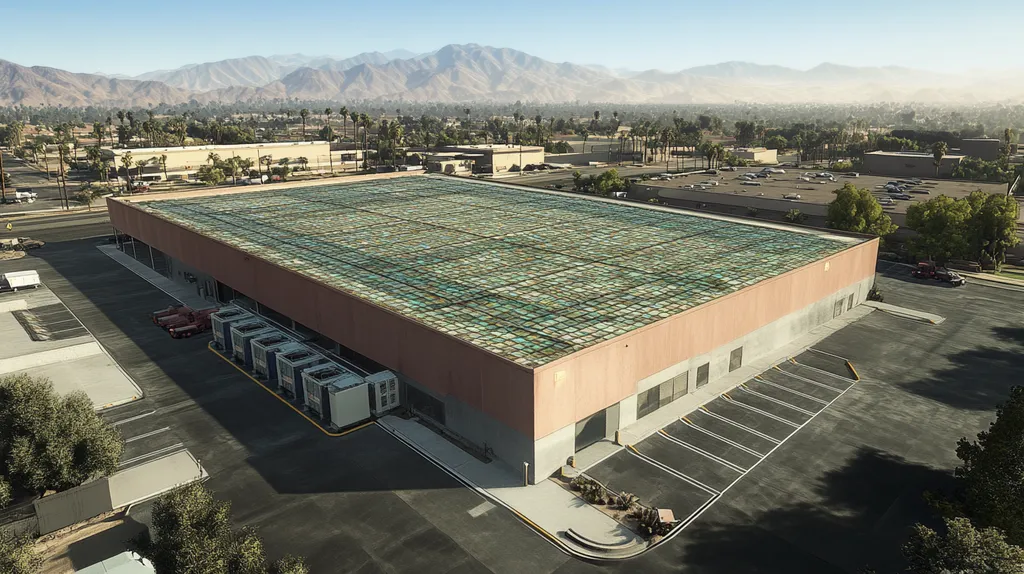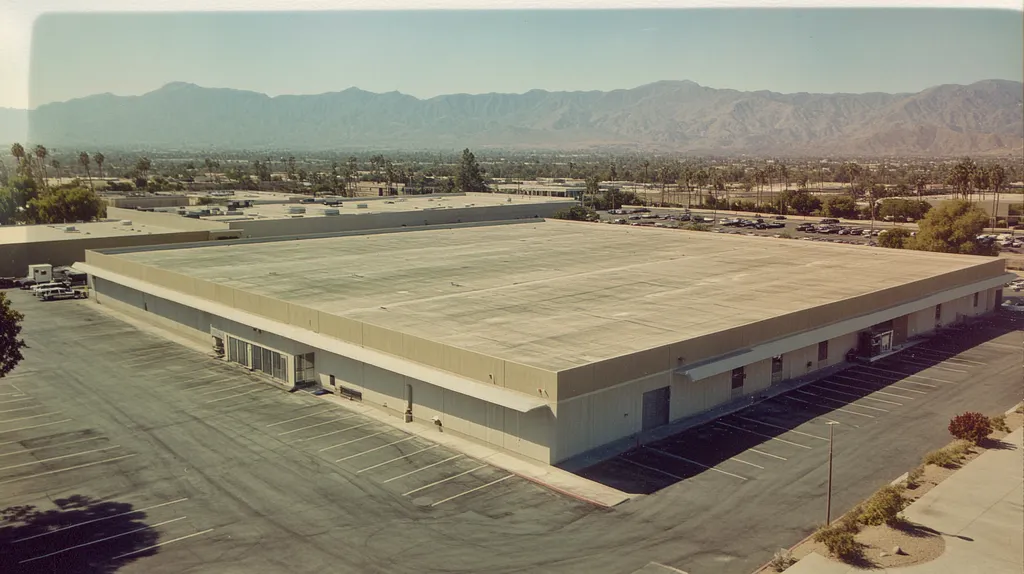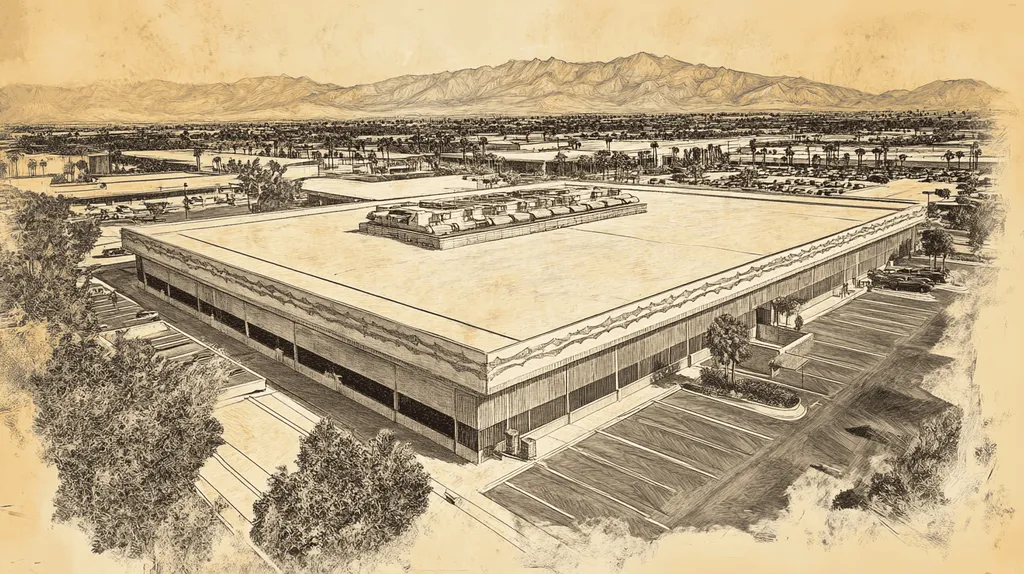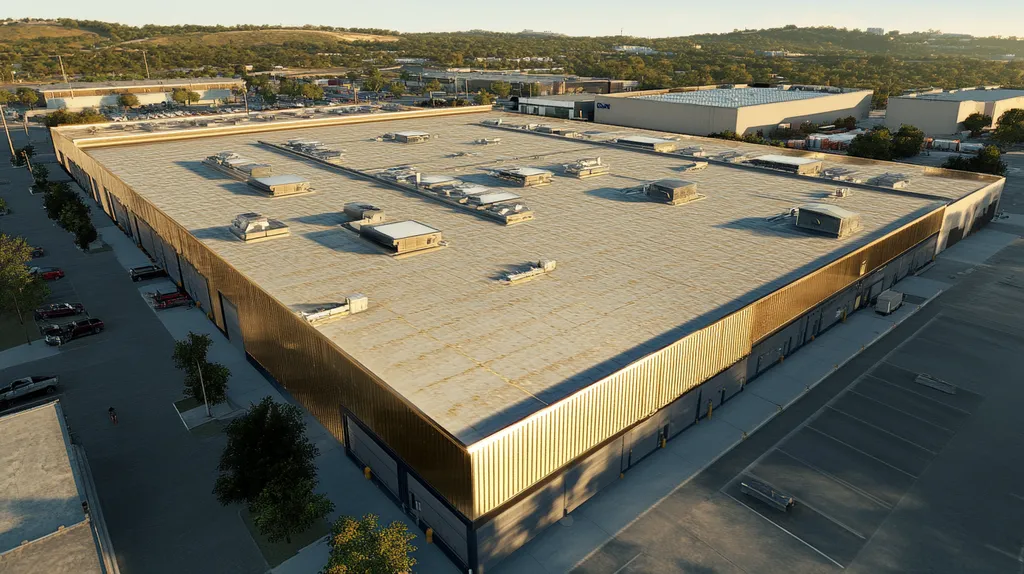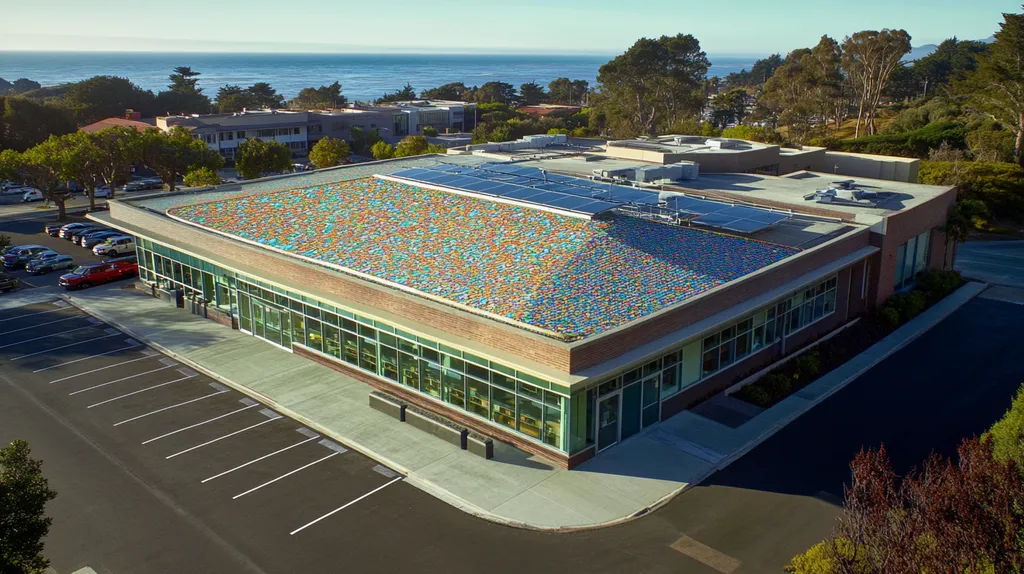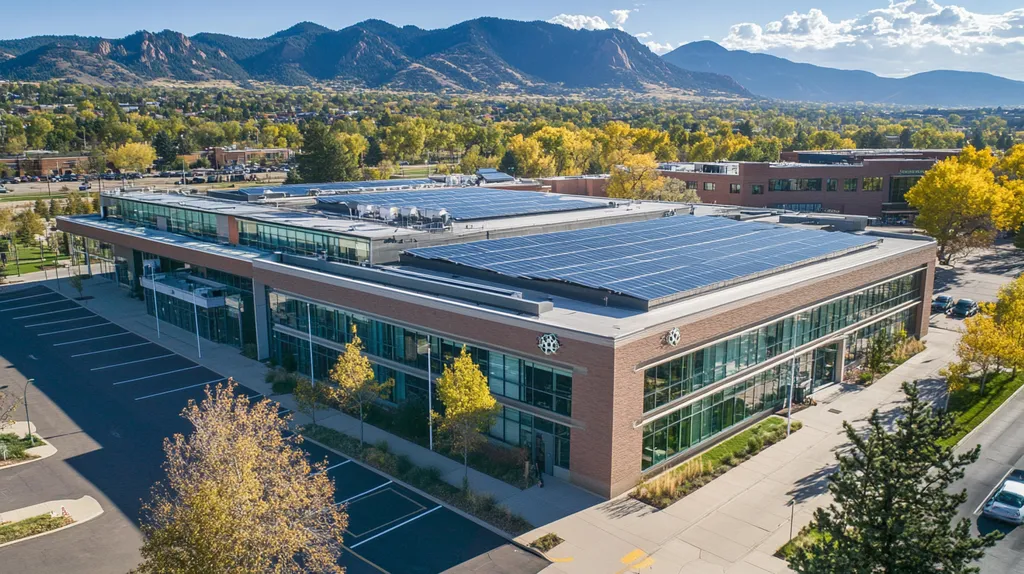In an era where energy costs can devour up to 30% of a building’s operating budget, the marriage of smart technology and solar power on industrial roofs isn’t just innovative—it’s imperative. Yet surprisingly, over 60% of commercial buildings still lack basic energy monitoring systems.
The integration of intelligent sensors, data analytics, and solar technology presents a game-changing opportunity for facility managers to slash energy waste while maximizing renewable power generation.
This comprehensive guide cuts through the tech hype to deliver actionable insights on combining smart systems with solar installations, ensuring industrial properties capture measurable efficiency gains without falling for costly gimmicks.
SECTION 1: THE BASICS EXPLAINED
The merger of smart technology and solar energy on industrial roofs isn’t a passing fad; it’s a crucial strategy in today’s energy landscape. With energy expenses skyrocketing and sustainability climbing the ranks of corporate priorities, facilities that fail to adapt may face not just higher costs but also diminished competitiveness. Alarmingly, the U.S. Department of Energy reports that commercial buildings can waste up to 30% of their energy. Grasping how to integrate smart technology with solar solutions is essential for maximizing energy efficiency in an industrial context.
What It Is (In Plain Language)
Smart technology for industrial roofs encompasses digital tools designed to monitor and manage energy usage efficiently. This includes Internet of Things (IoT) devices that track energy consumption, weather data, and solar panel performance. Meanwhile, solar energy systems transform sunlight into electricity, diminishing reliance on fossil fuels.
Together, these technologies drive enhanced building performance. For instance, smart inverters optimize solar energy production by adjusting settings depending on real-time conditions. This clever combination creates an energy-efficient roofing solution that’s as responsive as it is powerful.
In real terms, industrial roofs equipped with smart technology don’t just generate power; they can also dynamically monitor and control energy usage. This integration ensures that energy consumption matches actual needs, significantly cutting down on waste.
This holistic approach empowers facility managers to make smarter decisions. It streamlines maintenance and allows for more effective resource allocation, ultimately slashing operational costs.
Why It Matters (To Your Building)
Implementing smart technology alongside solar energy has substantial ramifications for industrial buildings. The economic advantages can be eye-opening. By curtailing energy waste, companies can ramp up savings on utility bills, boosting their overall profitability.
On top of that, these systems elevate a business’s image and competitive stance. These days, customers lean toward companies that champion sustainability. A commitment to green energy can differentiate a facility in a crowded marketplace.
Additionally, many energy efficiency initiatives open doors to tax incentives and rebates, making the investment in smart technology and solar systems even more attractive.
In the grand scheme, embracing these innovations enriches a building’s long-term viability. Modern industrial roofs that utilize intelligent systems can better adapt to evolving regulations and shifting market demands.
How It Works
The magic of smart technology and solar systems kicks off with data collection. Sensors placed on or near the roof gather useful information about energy usage patterns and environmental variables. This data gets sent to a centralized management system for analysis.
Once the data is secured, artificial intelligence algorithms jump into action, optimizing power consumption and solar energy utilization. For example, during peak solar hours, the system can prioritize solar energy over grid power, ensuring efficiency.
These technologies also facilitate predictive maintenance. By scrutinizing performance data, facility managers can address potential problems before they snowball into expensive repairs.
Finally, automated controls adjust lighting, heating, and cooling based on real-time energy availability. This dynamic operation means energy use stays in sync with solar production, creating a seamless and sustainable energy ecosystem.
SECTION 2: PRACTICAL APPLICATIONS
With energy costs climbing like a rock up a cliff, and sustainability becoming a buzzword that’s actually worth considering, integrating smart technology with solar energy is no longer just optional—it’s essential. Facilities can save a staggering 30% on energy costs by fine-tuning their energy use with intelligent systems. This section dives into real-world applications of these technologies, showcasing their undeniable benefits for property owners and facility managers.
Common Uses & Examples
Smart technology is reshaping industrial roofing with innovative applications like solar panel monitoring systems and energy management software. These systems deliver real-time insights into energy production, empowering facility managers to pinpoint inefficiencies faster than ever. For instance, a manufacturing plant equipped with IoT devices can tactically adjust energy consumption during peak hours, slashing costs significantly.
Furthermore, weather-tracking smart sensors can offer crucial data that informs maintenance decisions, helping prevent premature wear on roofing materials. Some innovative companies even utilize drones for high-tech inspections, capturing detailed images that evaluate solar power efficiency. This level of integration streamlines operations while boosting safety and reliability.
Moreover, coupling energy storage solutions with solar panels ensures a consistent power supply during outages or peak demand periods. Together, these technologies forge a robust energy strategy that maximizes savings and operational efficiency.
In summary, these applications highlight the game-changing potential of smart technology in amplifying the benefits of solar energy on industrial roofs.
When You Need It Most
The prime time to integrate smart technology with solar energy is during the blueprint phase of new construction or during substantial renovations. By embedding these systems from the get-go, businesses can harness maximum efficiency from day one. Retrofitting existing facilities also presents a golden opportunity to bolster sustainability and energy management.
Industries like manufacturing and logistics, which face unpredictable energy costs, stand to reap significant rewards from these technologies. During peak seasons, energy spikes can wreak havoc on budgets, making real-time management and monitoring absolutely essential.
Additionally, companies navigating the choppy waters of changing energy efficiency regulations will find these systems invaluable. Compliance with strict sustainability standards often requires rapid adaptations, and an integrated approach becomes a company’s best ally.
Ultimately, timing is crucial. Riding the wave of smart technology with solar energy can lead to long-term cost savings and improved compliance during essential operational phases.
Interactions With Other Systems
Smart technology and solar energy don’t work in a vacuum. These systems interact fluidly with other building management technologies, like HVAC and lighting controls. For example, smart energy management can optimize HVAC operations based on real-time energy production from solar panels, leading to drastically lower energy consumption.
Moreover, leveraging data analytics can help identify energy trends and adjust operational schedules accordingly. Facilities employing advanced analytics tools can forecast energy requirements and synchronize solar production with usage, elevating overall efficiency.
Additionally, these technologies pave the way for smarter maintenance schedules. By integrating solar panel data with predictive maintenance systems, facility managers can tackle issues proactively, cutting down on downtime and repair expenses.
Recognizing the interdependency of these systems can translate into smoother operations and substantial cost savings across the board.
SECTION 3: KEY TERMINOLOGY DECODED
In the rapidly evolving world of smart technology and solar energy, property owners and facility managers must navigate a labyrinth of terminology to ensure they make the best decisions for their industrial roofs. Without a firm grasp on these terms, it’s easy to feel overwhelmed and, worse, miss out on significant savings and efficiency gains. This section breaks down essential terms, clarifies industry jargon, and demystifies measurement units—all of which are crucial for maximizing energy efficiency.
Essential Terms Explained
Smart technology encompasses advanced systems that supercharge building operations. In the context of industrial roofs, this includes smart sensors and monitoring devices, which keep tabs on energy use, identify leaks, and fine-tune solar energy generation.
Solar panels are the heart of solar systems, converting sunlight into electricity. Familiarity with types like monocrystalline and polycrystalline panels is essential since each type varies in efficiency and cost—think of them as your energy-generating superheroes with different superpowers!
Energy efficiency is using less energy to achieve the same outcome. In a world where budgets are stretched, this concept is vital for businesses aiming to save on operational costs. An energy-efficient building doesn’t just keep money in the pocket; it also helps the planet.
Green roofing systems take energy efficiency to the next level by integrating vegetation into building designs. These roofs are nature’s insulation, absorbing rain, reducing heat, and encouraging urban biodiversity. They are more than just pretty; they’re essential in sustainable building practices.
Industry Jargon Translated
Building Integrated Photovoltaics (BIPV) is a fancy way to describe solar products embedded directly into building materials—think skylights or wall sections that double as energy generators. This innovation allows buildings to produce energy without sacrificing style.
Net Zero Energy Building (NZEB) is a buzzword you’ll hear often. It refers to a building that produces as much energy as it consumes, offering long-term savings. For industrial spaces, achieving NZEB status is not just a goal; it’s a competitive advantage.
Drones are revolutionizing roof inspections and data collection. Facility managers who embrace this technology can ensure their rooftops remain in prime condition, all while elevating safety and efficiency to new heights.
Energy Management Systems (EMS) help businesses keep their energy consumption in check. By providing real-time tracking and optimization, these systems shine a spotlight on inefficiencies, equipping facility managers with the knowledge to implement effective strategies.
Measurement & Units Simplified
On the topic of solar energy, understanding terms like kilowatts (kW) and kilowatt-hours (kWh) is critical. A kilowatt measures power, while a kilowatt-hour tells you how much energy has been used over time. Knowing the difference is essential when evaluating your energy production and consumption.
Solar panel efficiency is typically expressed as a percentage, indicating how effectively sunlight is converted into usable electricity. Higher efficiency ratings mean you get more power from the same surface area—like finding a hidden layer in a chocolate cake!
Roof pitch, measured in degrees or ratios, plays a crucial role in solar panel installation. Getting the angle right means maximizing sunlight exposure and, in turn, boosting energy production. Understanding this can be the difference between hitting your energy goals and falling short.
Lastly, grasping the concept of a carbon footprint is key in energy discussions. This measurement reflects the total greenhouse gases produced by a building, underlining the pressing need for energy-efficient technologies to cut down on harmful emissions.
SECTION 4: DECISION FACTORS
The transition to integrating smart technology with solar energy on industrial roofs is a critical move that carries significant implications. Property owners need to recognize these decision factors because they directly influence how effective their roofs can be. Recent findings reveal that up to 30% of potential energy savings can vanish due to ill-informed technology choices. A careful evaluation of cost, performance, and durability is crucial for maximizing energy efficiency and ensuring valuable long-term investments.
Cost Considerations
Cost is often the first hurdle that property owners face when integrating smart technology and solar solutions. The initial investment can be hefty, with sophisticated integrated systems running anywhere from tens of thousands to hundreds of thousands of dollars. Yet, the prospect of long-term savings—thanks to enhanced energy efficiency and lower utility bills—makes these upgrades an appealing option.
Financial incentives like tax credits and rebates can also help ease the initial burden. Depending on their location, property owners may find various local governments and utility companies eager to support the installation of solar arrays and smart tech. Therefore, it’s vital to conduct a comprehensive cost analysis that includes these opportunities to make informed decisions.
Don’t forget about the ongoing maintenance costs tied to these smart systems. While modern technologies often promise efficiency, they may also come with unexpected service needs and repair costs. Gaining a full understanding of these financial aspects ensures that investments align with long-term energy strategies.
In summary, weighing immediate expenses against future savings and available incentives creates a more balanced cost consideration, leading to maximized returns on investment.
Performance Trade-offs
Performance trade-offs are essential when evaluating a roof’s functionality. Different types of smart technology offer various advantages and limitations that can directly impact energy efficiency. For example, certain smart systems might enable real-time monitoring, allowing for fast detection of leaks or inefficiencies. However, relying on intricate technology can introduce vulnerabilities that mitigate these benefits.
Furthermore, property owners need to assess the solar technology output alongside the smart systems. Factors such as shading, weather conditions, and roof orientation all influence how effective a solar array will be. If these elements aren’t properly managed, the expected energy gains could easily slip through the cracks.
Additionally, compatibility issues might arise when integrating smart technology with existing roofing structures. This could require costly modifications, further affecting budget and timeline. A thorough evaluation of each technology’s performance capabilities and associated trade-offs is essential before implementation.
In conclusion, a careful analysis of performance factors equips property owners to ensure their investments contribute to enhanced energy efficiency and building durability.
Lifespan & Durability Factors
The lifespan and durability of roofing materials and technology greatly influence a building’s long-term viability. Industrial roofs face the brunt of severe weather, so choosing durable materials is crucial for lasting performance. Modern roofing materials incorporating smart technology may offer enhanced durability, yet their longevity depends on environmental exposure and proper maintenance.
The durability of integrated smart systems is vital as well. These technologies often contend with outside elements, which can lead to degradation over time. Regular maintenance and resilience measures are essential to keep systems functioning optimally throughout their lifespan.
Moreover, it’s pivotal to consider how various materials and technologies interact. Certain roof materials may not be suitable for solar panels, leading to diminished efficiency and durability. Awareness of these compatibility factors extends beyond initial installation; ongoing monitoring and evaluations are critical.
In summary, focusing on lifespan and durability helps property owners make informed investments while prioritizing long-lasting solutions that enhance energy efficiency and protect their assets.
SECTION 5: COMMON CHALLENGES
As smart technology and solar energy become standard features on industrial roofs, a slew of challenges pops up like weeds in a backyard. A staggering 40% of commercial roofs face energy system integration problems, which can translate to wasted funds and energy inefficiencies. Property owners and facility managers need to be aware of these pitfalls to truly maximize energy efficiency. This section unpacks common issues, the red flags to keep an eye on, and preventative measures to safeguard those investments.
Frequent Problems & Solutions
One of the primary hurdles is the improper installation of solar panels and smart technology systems. If these setups aren’t configured correctly, expect inconsistent energy generation and performance that could make even a solar panel cry. The path to avoiding this detour is straightforward: hire seasoned contractors with a proven record in these integrations and conduct regular inspections throughout the installation process to ensure everything aligns perfectly.
Equally troublesome is the underlying structural integrity of the roof. Industrial roofs are tasked with supporting the added weight of solar panels and associated equipment. A thorough structural analysis before installation is critical; it prevents costly repairs down the line and ensures the roof can handle the load. Upgrading roofing materials may also be necessary to boost durability and load-bearing capacity.
Lastly, there’s often a disconnect between existing roofing systems and new technology. Not every roof is equipped to handle the complexities of smart tech. Consulting specialists to assess compatibility before making investments is essential. If components can’t play nicely together, the entire system is at risk, and so are the anticipated energy efficiencies.
Warning Signs To Watch For
Property owners should be on the lookout for roof damage indicators like leaks, cracks, and warping. These not-so-subtle signs compromise the roof’s integrity and can hinder solar installations’ effectiveness faster than you can say “drain on my budget.” Addressing these issues promptly can save a fortune in repairs and protect investments in solar technology.
Inconsistent energy output is another red flag that signals trouble brewing. If solar systems frequently fail to maintain steady energy production, it’s time for an investigation. Monitoring systems that track energy performance can help highlight these issues before they escalate.
Keep an eye on thermal inefficiency signs as well; if energy costs unexpectedly spike, something isn’t right. Monitoring temperature fluctuations can provide clues about potential roofing issues. Regular energy audits can offer insights into system performance and reveal areas that need attention before they balloon into costly disasters.
Preventative Approaches
Regular maintenance schedules for both roofs and integrated technologies are crucial to ward off long-term problems. Routine checks can identify wear and tear before they lead to major headaches. Establishing an annual inspection plan ensures all systems work harmoniously and efficiently.
Investing in top-quality materials is essential too. Durable roofing materials tailored for solar installations can significantly minimize future complications. Choosing the right insulation also boosts energy efficiency, enhancing roof longevity while keeping heating and cooling costs in check.
Finally, education is every building owner’s best friend. Training staff to recognize early warning signs of system failures can make all the difference. This proactive approach extends the roof’s lifespan and optimizes the performance of both solar and smart systems. Empowered employees mean smarter decisions and fewer costly fixes down the line.
SECTION 6: NEXT STEPS & RESOURCES
As the demand for sustainability heats up, integrating smart technology with solar energy on industrial roofs has become crucial. With nearly 30% of industrial buildings eyeing solar installations, those who don’t get informed risk being left in the dust. Property owners and facility managers need to ask the right questions and utilize available resources effectively. Familiarity with industry standards is essential to ensure compliance and validate choices, while further learning opportunities can keep stakeholders ahead of the curve.
Questions To Ask Providers
Before locking in a provider for solar and smart technology solutions, it’s vital to ask the right questions. Start by digging into their experience with similar industrial projects. This insight sheds light on their grasp of unique challenges and sustainability requirements.
Next on the list: integration capabilities. How will the smart technology mesh with existing building systems? Compatibility is key for ensuring smooth operation and avoiding costly headaches later on.
Don’t skip inquiries about monitoring tools. Understanding the level of data access provided can significantly influence performance evaluations and operational efficiencies.
Finally, dive into maintenance support. Providers should clearly outline ongoing service options to keep installed systems running efficiently for the long haul. A proactive maintenance approach can lead to lasting benefits in energy management.
Industry Standards & Guidelines
Getting familiar with industry standards and guidelines is non-negotiable for successful solar and smart technology integration. The Solar Energy Industries Association (SEIA) provides thorough resources and best practices for installation and safety protocols.
Moreover, the American National Standards Institute (ANSI) offers essential frameworks that ensure compliance with energy performance metrics. Knowing these guidelines helps property owners mitigate risks and align with industry expectations.
In addition, the International Energy Agency (IEA) publishes analytical reports and data on evolving energy standards. Accessing these resources keeps facility managers ahead of regulatory requirements and emerging technologies.
Lastly, engaging in industry associations and forums opens doors to networking and awareness of emerging trends. Staying connected nurtures a community that champions innovation and holistic energy management strategies.
Further Learning Simplified
For an edge in understanding smart technology and solar integration, accessible learning resources are vital. Online courses and webinars from organizations like the U.S. Department of Energy offer structured learning paths.
Industry-specific publications filled with articles and case studies showcase successful implementation strategies. These serve as practical references for those contemplating similar projects.
Additionally, don’t overlook local workshops and trade shows as valuable learning opportunities. Connecting with local experts fosters deeper understanding and practical applications of emerging technologies.
Finally, online platforms for peer discussions provide invaluable insights and firsthand experiences. Engaging with like-minded professionals enhances overall competence in navigating the complexities of energy-efficient roofing solutions.
The Bottom Line
With energy costs skyrocketing 40% in the last decade, industrial facilities can no longer afford to ignore the convergence of smart technology and solar power.
The marriage of intelligent monitoring systems with solar installations represents a transformative opportunity to slash operational costs while boosting sustainability credentials.
Yet rushing into implementation without proper planning risks costly mistakes, as evidenced by the 30% failure rate of first-time smart roof deployments.
Success requires careful evaluation of structural requirements, selection of compatible technologies, and partnership with qualified providers who understand both roofing and renewable energy.
Those who master this integration will gain a decisive competitive advantage as energy prices continue their relentless climb and sustainability regulations tighten.
FREQUENTLY ASKED QUESTIONS
Q. What is smart technology on industrial roofs?
A. Smart technology refers to digital tools that monitor and manage energy usage on industrial roofs. This includes IoT devices that track consumption and solar panel performance, ultimately aiming to cut down on waste and improve efficiency.
Q. How can an industrial roof benefit from smart technology and solar?
A. Integrating these technologies helps facilities reduce energy costs significantly, enhance sustainability, and bolster their competitive edge. Businesses can also enjoy potential tax incentives tied to energy efficiency initiatives.
Q. What key terms should I understand about commercial roofs?
A. Understanding terms like solar panels, energy efficiency, and Building Integrated Photovoltaics (BIPV) is crucial. These concepts help you navigate successful integration and leverage smart technology effectively on your industrial roof.
Q. What cost considerations should I keep in mind for my commercial roof?
A. Initial investment costs can vary widely, making thorough evaluations essential. Consider financial incentives and long-term savings to balance out the upfront expenses related to smart technology and solar solutions.
Q. What common challenges arise with energy integration on an industrial roof?
A. Some challenges include improper installations, structural issues, and compatibility problems with existing roofs. Awareness of these pitfalls helps facility managers prevent wasted resources and maintain operational efficiency.
Q. What are the next steps for integrating solar and smart tech?
A. Start by asking potential providers the right questions about their experience and integration capabilities. Familiarization with industry standards and engaging in further learning will fortify your decision-making.
Q. What’s the lifespan of smart technology on industrial roofs?
A. The lifespan varies based on materials and maintenance. Regular inspections and proactive upkeep increase durability, ensuring that smart systems continue to function effectively over the years amidst environmental challenges.

